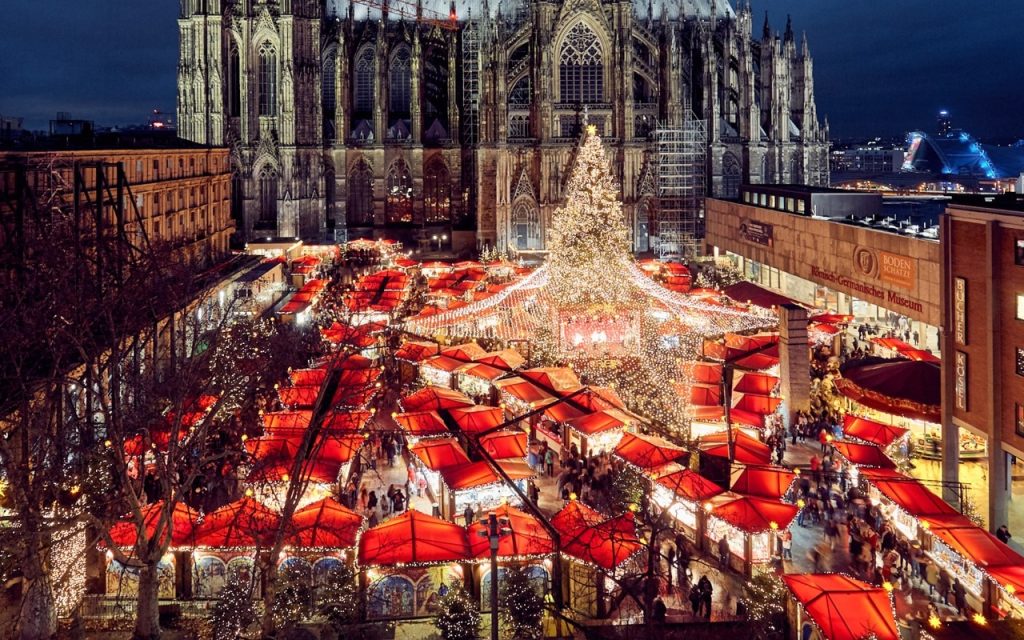
The proud tradition of Christmas Markets in Germany
– PRESENTED BY A-ROSA RIVER CRUISES –
German Christmas markets date back to the 14th century. Initially set up as trade fairs, allowing people to stock up on essentials for the winter months, traders soon embraced the opportunity to sell handicraft, knickknacks and toys, which made ideal Christmas gifts. Not long after, hot street food was soon on offer too, to keep patrons warm and enthused amidst the hustle and bustle of Christmas shopping. Nothing has changed over the centuries!
Bratwurst, Germany’s iconic grilled sausage, and Glühwein, a type of mulled wine, are still the quintessential culinary delights of any Germanic Christmas market. Traditionally made from sugared red wine with cinnamon and spices, several Glühwein variations have been created over the years, including non-alcoholic versions.
Nothing warms the cockles of your heart and depicts the Christmas market spirit better than sipping a Glühwein, from a specially crafted mug, while strolling along the vast variety of lovingly decorated vendor stalls. Admiring the creations of skilled artisans like handmade wooden toys and knitted mittens and shawls, inhaling mouth-watering whiffs of sweat and savory Christmas delicacies and listening to jolly chitter-chatter and romantic Christmas carols, one cannot help but feel a tremendous sensation of festive joy. Picture the scent of steaming sweet wine, delicious sugar-coated roasted nuts and almonds, caramelised fruit, honey flavoured gingerbread and the enticing aromas of rich soups and delectable sausages. Colourful lighting, sparkling in the dark, dazzling decorations and a mind-boggling range of Christmas ornaments in all shapes and forms complete the picture, with the soothing sound of season classics like Silent Night as perfect backdrop.
To this day Christmas markets are communal meeting places for young and old, families, work colleagues, neighbours and friends. Locals rub shoulders with visitors, stories are shared, and the Christmas spirit is embraced. Generally located at a town’s main square, Christmas markets with historic scenery – such as traditional half-timbered houses and old churches – ooze additional charm of bygone eras. The fairy-tale like setting is usually completed by a display of the nativity scene. Sometimes devotedly created by local children, other times with life size sculptures or even live animals, each township adds its own flavour. Some larger cities even host several Christmas markets, each one of them with its own spin. Cologne, for example, boasts six, the biggest in the shadow of its imposing historic cathedral. Another one is located on the banks of the Rhine river, in the grounds of a Chocolate Museum.
INSIDER TIP:
Every Christmas market has its own version of porcelain or glass Glühwein mug. At large Christmas markets, individual vendors may even have their own collections. Vendors charge a small deposit for the mugs, when selling their beverages, which is refunded on return. However, they make unique and very memorable souvenirs if you decide to keep them.
